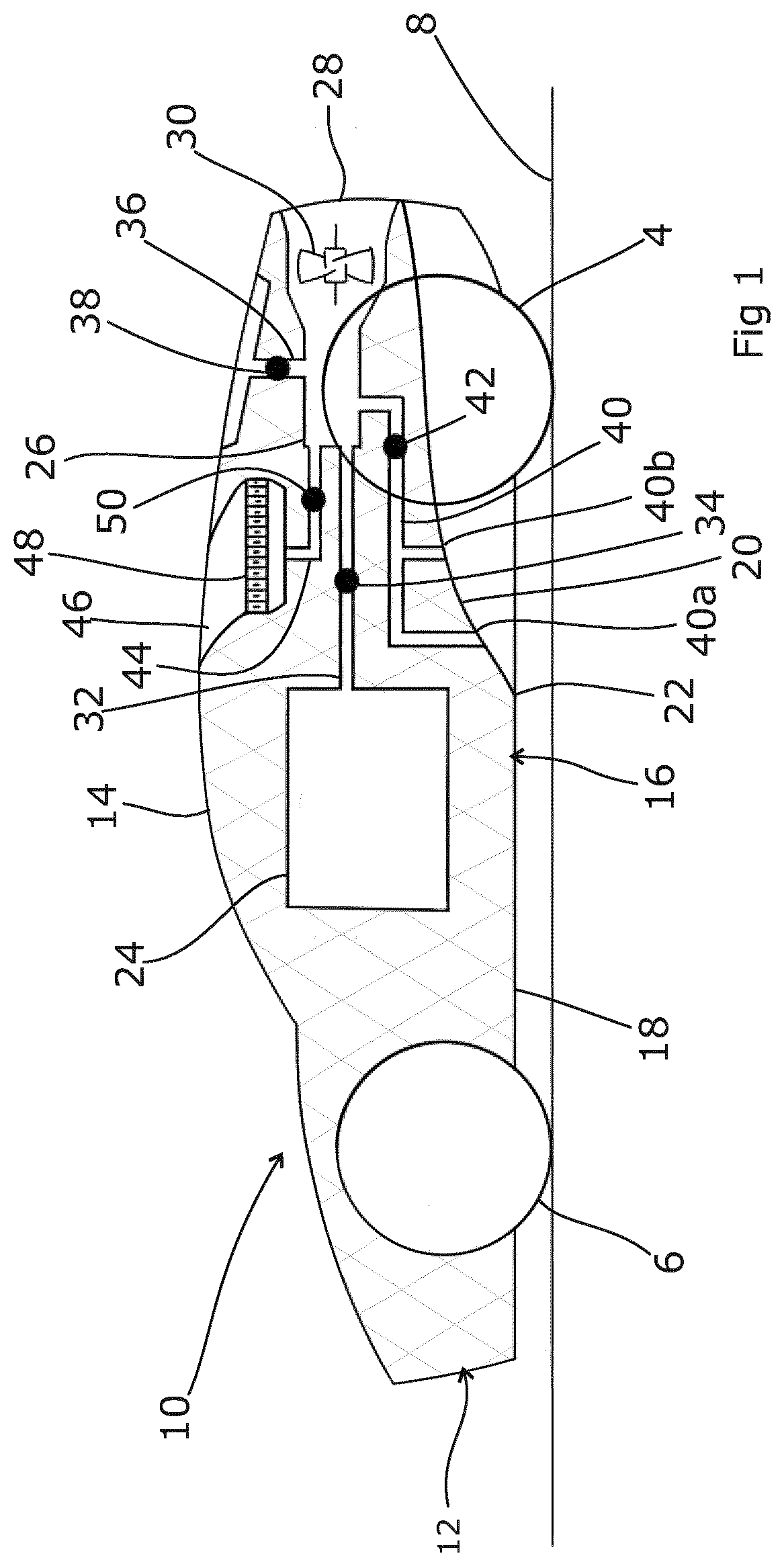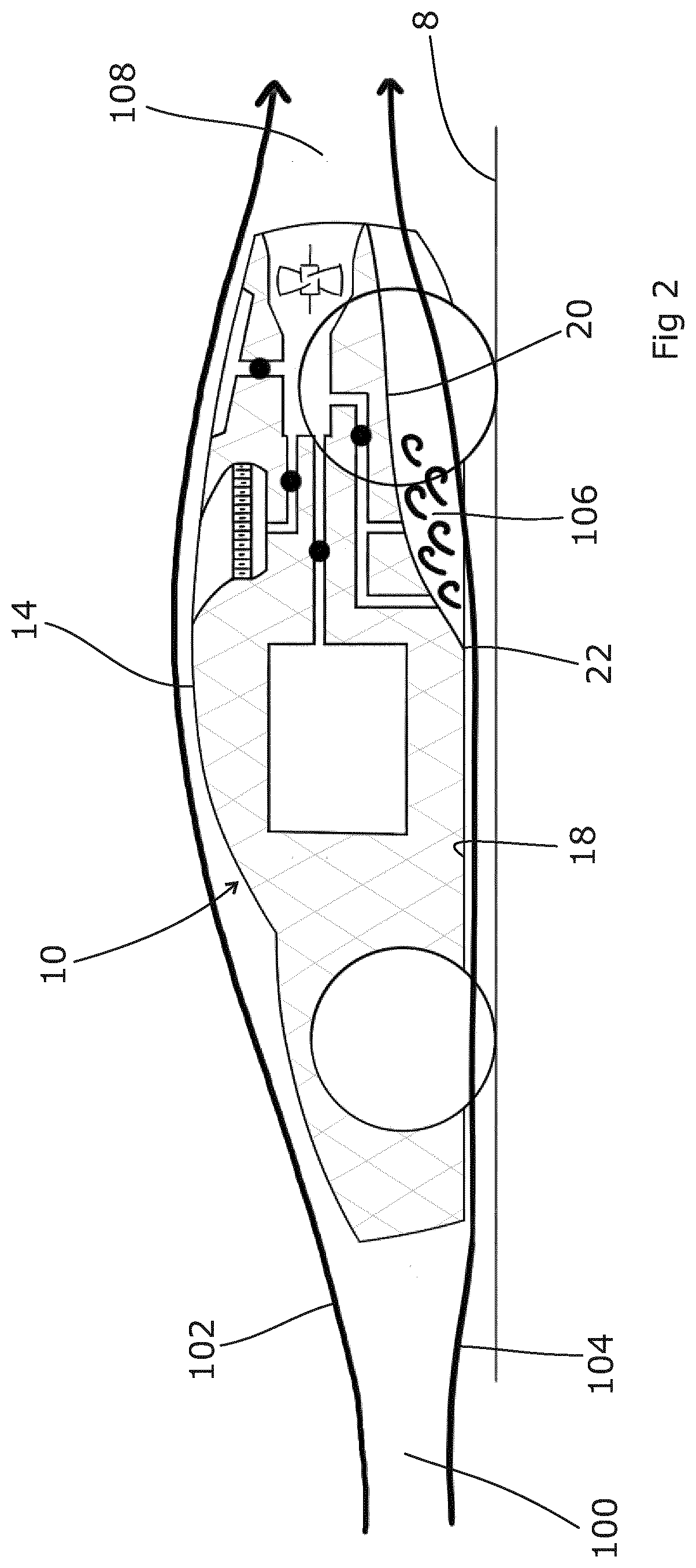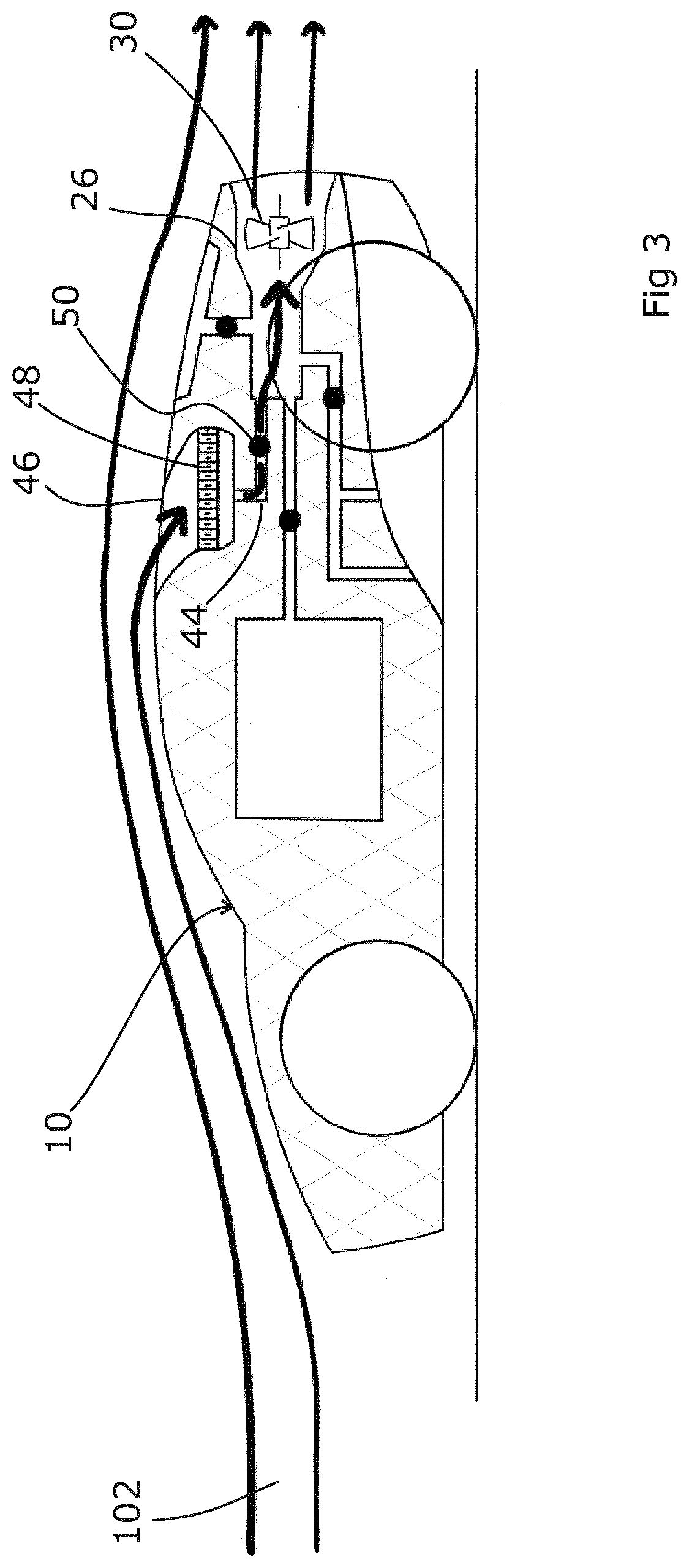Vehicle
a technology for vehicles and vehicles, applied in the field of vehicles, can solve the problems of imposing drag penalties, affecting the visual appearance of vehicles, and requiring a high level of lateral acceleration, and achieve the effect of not exceeding the battery capacity
- Summary
- Abstract
- Description
- Claims
- Application Information
AI Technical Summary
Benefits of technology
Problems solved by technology
Method used
Image
Examples
Embodiment Construction
[0027]FIG. 1 shows a vehicle embodying the present invention, in the form of a car 10 resting on the ground 8 via front and rear wheels 6, 4, which are attached to the car 10 via a suspension arrangement (not shown). The car 10 is shown in schematic form only for clarity; thus the illustration shows a bodyshell 12 comprising an upper body surface 14 and an under-surface 16 that itself consists of a forward undertray 18 and a rearwardly-located diffuser 20. The forward undertray 18 is generally flat, level and smooth in order to allow for a smooth airflow under the car. In some cases, although not illustrated, there may be a leading edge. At a point part way along the underside of the car 10 it transitions at a step 22 to the diffuser 20. The diffuser 20 defines an under-surface to the car 10 which arches upwardly to provide a greater spacing between the under-surface 16 and the ground 8 beneath the rear section of the car 10.
[0028]It should be understood that this configuration of t...
PUM
 Login to view more
Login to view more Abstract
Description
Claims
Application Information
 Login to view more
Login to view more - R&D Engineer
- R&D Manager
- IP Professional
- Industry Leading Data Capabilities
- Powerful AI technology
- Patent DNA Extraction
Browse by: Latest US Patents, China's latest patents, Technical Efficacy Thesaurus, Application Domain, Technology Topic.
© 2024 PatSnap. All rights reserved.Legal|Privacy policy|Modern Slavery Act Transparency Statement|Sitemap



